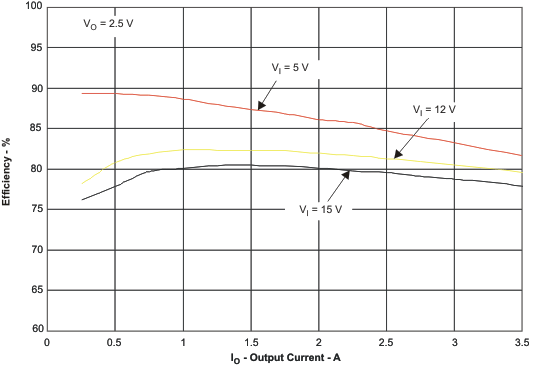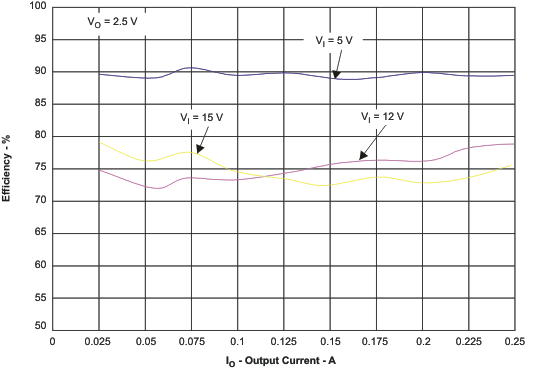SLVU276A February 2009 – October 2021 TPS54332
2.2 Efficiency
The efficiency of this EVM peaks at a load current of about 0.5 A and 5-V input, then decreases as the load current increases towards full load. Figure 2-1 shows the efficiency for the TPS54332EVM-416 at an ambient temperature of 25°C.
 Figure 2-1 TPS54332EVM-416 Efficiency
Figure 2-1 TPS54332EVM-416 EfficiencyFigure 2-2 shows the efficiency for the TPS54332EVM-416 at lower output currents between 0.025 A and 0.250 A at an ambient temperature of 25°C.
 Figure 2-2 TPS54332EVM-416 Low Current Efficiency
Figure 2-2 TPS54332EVM-416 Low Current EfficiencyThe efficiency can be lower at higher ambient temperatures, due to temperature variation in the drain-to-source resistance of the internal MOSFET.